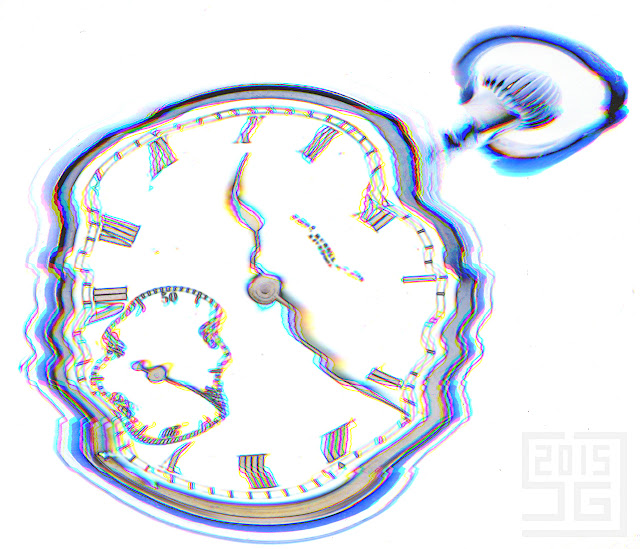The first assignment was not to use a camera, rather a flatbed scanner. This ended up being a very interesting technique and something I hope to return to in the future. My scanner is capable of scanning at up to 12800 dpi, so ended up with some very large images. A bit overkill, but here is a very scaled down image.
Aside from creating some nice images of the watch face, I stumbled on a pretty surprising effect. Look at the second hand (the inset dial). What is happening here? All the evidence is already in the image, but I'll give a couple of clues. 1) The watch still works 2) The scanner head moves from the top of the image to the bottom. Let me know your analysis in the comments.
And finally, because my artist sister-in-law was over, she noticed the cool moving second hand effect and asked what would happen if I moved the whole watch during the scan. A scan and a bit of photoshop processing later (though not as much as you might expect for this image), I arrived at the below photo.
I just love the swirly chromatic strands on the hour and minute hands.
This course, while very exciting and about which I will be posting frequently, is not the special announcement I was going to make, so stay tuned again for the actual announcement.
Later,
Stuart





No comments:
Post a Comment